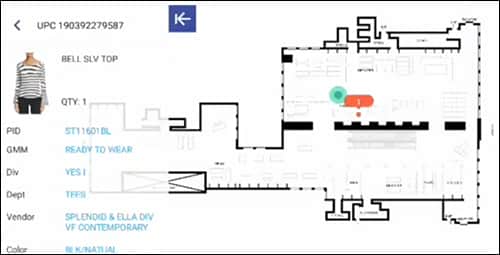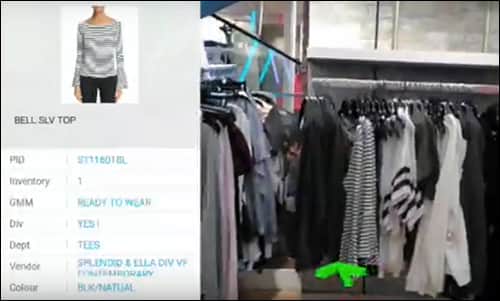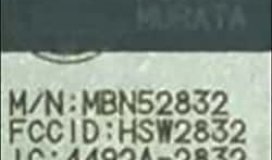A national retailer is testing StealthMatrix ARC, a new RFID-based solution from Stealth Network Communications, to access item-level location data via UHF RFID technology coupled with augmented reality.
StealthMatrix ARC (the acronym stands for Artificial Reality Computation) enables users to visually access the locations of RFID-tagged items on a 2D map, even as a user moves around a facility, following an arrow that directs him or her specifically to the item sought. The system provides a store- or warehouse-wide view into the locations of tagged items that management and other individuals, such as store associates, can employ to understand the location and status of their goods.

The system consists of a cloud-base software platform and app that utilizes data from a business's RFID system to plot item-level location data on a facility-wide map. It also comes with a mobile device with a built-in RFID reader, as well as a camera-based sensor to detect a user's location when a given tag is read, as well as when a particular tagged item is being sought.
Stealth Network Communications was launched in 1994 to deliver voice, data, security network and wireless solutions to the commercial market and to government agencies. More recently, the firm began developing the solution for use in providing inventory management at stores and warehouses, as omnichannel sales require greater inventory visibility.
Commonly, traditional RFID in the retail market consists of fixed readers installed either at portals or overhead, which then read tags as inventory moves around a store. Conversely, staff members can utilize handheld readers to conduct inventory counts, and on Geiger counter mode to locate products.
There are shortcoming to both methods, however, says Margaret Nyswonger, Stealth Network Communications' president and CEO. A fixed RFID reader infrastructure for portals or store-wide real-time tracking is expensive, while simply using a handheld reader to capture tag reads does not automatically locate the interrogated tags and their products in specific places, nor does it provide visual 2D map location or wayfinding.
"At the end of the day," Nyswonger states, "if I have RFID-tagged inventory, I know I have it in my inventory or in the store," though that is not enough information for many businesses—especially those such as department stores, which contain large, complex merchandise offerings. Therefore, a store is still challenged to identify exactly where its tagged products are located, even if the RFID data from a handheld inventory count has determined those products to be on hand.

The StealthMatrix ARC solution is intended to make omnichannel order fulfillment faster and easy for sales associates, and to improve the customer experience for those who visit the store to shop. To accomplish this goal, the system leverages RFID data in conjunction with augmented reality software—the kind commonly used in online gaming—to help users navigate their way toward an RFID tag. "Now the retailer and the consumer are confident that what is on their e-commerce site and what is actually in store is accurate," Nyswonger explains. In addition to knowing the location, she says, "They have a visual snapshot of the item's location and can use the navigation feature to guide them to the individual merchandise."
Users carry a StealthMatrix ARC handheld device, designed and built by Stealth Network, which can be mounted on a rolling cart or rack (or carried), and then run the ARC app in order to locate goods. The handheld unit includes not only the RFID reader, but a camera for 2D mapping and wayfinding. A user would first use the ARC app on the device to set up a 2D map of the store space. He or she would simply walk around the area, and the software would use the camera to create a map.
The device can then be used to locate goods. Many retailers are already receiving their merchandise from brands and suppliers with EPC UHF RFID tags attached, and those tag ID numbers can be employed in the ARC system. A store associate could simply walk through the aisles of the store and read tag IDs as they went along, or attach the device to a rolling rack and go about his or her day, moving throughout the store and reading tags as they did so. The software would thus identify the reader's location and link that information with the tag ID on the 2D map.



